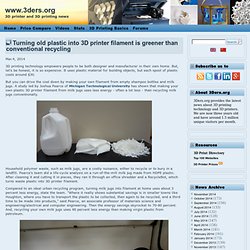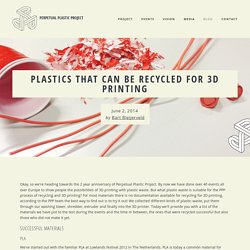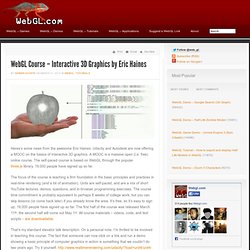

Man Constructs 3D Printed Concrete Castle. Minnesotan contractor Andrey Rudenko is now the king of his castle; his 3D-printed concrete castle, that is.

After completing a journey that took more than two years, Rudenko developed a customized 3D printer to extrude concrete and build a castle that he had designed himself. The entire structure is approximately 3 meters by 5 meters, which really makes it an amazing backyard fort rather than an actual livable structure. Extruding concrete to create 3D-printed buildings isn’t entirely novel. It has been proposed to quickly create inexpensive housing in poverty-stricken areas and even to build infrastructure on Mars before the arrival of astronauts. However, those buildings were designed to be fairly simple and lacked architectural details. Image credit: Andrey Rudenko, Total Kustom As a machine capable of extruding concrete wasn’t commercially available, Rudenko had to develop his own. Coming soon: 3D printable solar panels capable of powering… anything.
Life cycle analysis of distributed recycling of post-consumer high density polyethylene for 3-D printing filament. Turning old plastic into 3D printer filament is greener than conventional recycling. Mar.4, 2014 3D printing technology empowers people to be both designer and manufacturer in their own home.

But, let's be honest, it is so expensive. It uses plastic material for building objects, but each spool of plastic costs around $30. But you can drive the cost down by making your own filament from empty shampoo bottles and milk jugs. A study led by Joshua Pearce of Michigan Technological University has shown that making your own plastic 3D printer filament from milk jugs uses less energy - often a lot less - than recycling milk jugs conventionally. Household polymer waste, such as milk jugs, are a costly nuisance, either to recycle or to bury in a landfill.
Compared to an ideal urban recycling program, turning milk jugs into filament at home uses about 3 percent less energy, state the team. Company develops new fiber-reinforced wood, concrete ink for 3D printing. Even though 3D printing is an emerging market and technology, aside from Defense Distributed’s gun, it seems like it has hit a plateau.

You can make little or somewhat-bigger-than-little figurines, teacups and mugs that often have leaks, or fragile parts — such as gears — that you can include in a working item, but might quickly wear down. One of the things holding 3D printing back is the material used to print objects. A San Francisco-based company, Emerging Objects, has created new printing materials that aren’t just plastic, but composed of wood, concrete, and even salt.
For the uninitiated, normal 3D printing is additive. Plastics that can be recycled for 3D printing — Perpetual Plastic Project. Okay, so we're heading towards the 2 year anniversary of Perpetual Plastic Project.

By now we have done over 40 events all over Europe to show people the possibilities of 3D printing with plastic waste. But what plastic waste is suitable for the PPP process of recycling and 3D printing? For most materials there is no documentation available for recycling for 3D printing, according to the PPP team the best way to find out is to try it out! We collected different kinds of plastic waste, put them through our washing tower, shredder, extruder and finally into the 3D printer. Today we'll provide you with a list of the materials we have put to the test during the events and the time in between, the ones that were recycled successful but also those who did not make it yet. We've started out with the familiar PLA at Lowlands festival 2012 in The Netherlands.
Thingiverse - Digital Designs for Physical Objects. FabLab Tacoma — Imagine. Design. Create. Why public libraries should follow Chicago’s lead and build maker labs. Square co-founder Jim McKelvey built the first prototypes for his little white credit card swiper at the TechShop workshop in Menlo Park, Calif.

MakerBot’s first 3D printer, the CupCake CNC, grew out of collaborations that began at the NYC Resistor hackerspace in New York City. Square and MakerBot are just the famous examples. TechShop members have also produced a tiny quadcopter and a DIY underwater robot that both easily hit their goals on Kickstarter. At the Noisebridge hackerspace in San Francisco, members once launched a balloon to the edge of space to take photos and video. All of these projects were made possible in part by organizations seeking to knock down barriers to making things. That made it especially exciting to hear that Chicago opened a maker lab in one of its public libraries today. I hope they do, and other libraries follow suit. Course – Interactive 3D Graphics by Eric Haines. Heres’s some news from the awesome Eric Haines: Udacity and Autodesk are now offering a MOOC on the basics of interactive 3D graphics.

A MOOC is a massive open (i.e. free) online course. The self-paced course is based on WebGL through the popular three.js library. 19,000 people have signed up so far. The focus of the course is teaching a firm foundation in the basic principles and practices in real-time rendering (and a bit of animation). Units are self-paced, and are a mix of short YouTube lectures, demos, questions, and in-browser programming exercises. The course time commitment is probably equivalent to perhaps 8 weeks of college work, but you can skip lessons (or come back later) if you already know the area.
That’s my standard elevator talk description. I’m passing on this news because I’m honestly excited by this ability to teach remotely in an engaging way (not just “man in front of powerpoint slides”). 3d Printing.